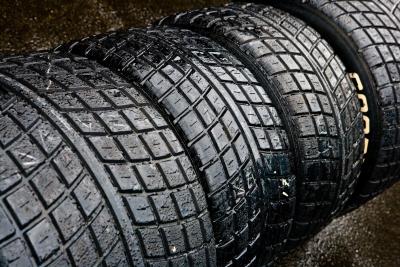
Passenger vehicle tires fall into two major categories, directional and non-directional tires. Before choosing a tire, it is important to know the advantages of disadvantages inherent to each design.
Directional tires are characterized by having a "directional" tread design, that is, a tread pattern designed to perform its best when rotating in one specific direction. Non-directional tires have a tread pattern that is designed to perform equally well regardless of the tires' rotational direction.
Directional tires have superior hydroplaning resistance versus non directional tires. This is because their directional tread pattern is designed to channel water away from the center of the tire.
Directional tires offer slightly better handling than non-directional tires. When a designer knows that a tire will only be rotating one way, they can engineer the tread pattern for maximum grip and stability when the tire is rolling in that direction.
Many automotive enthusiasts are drawn to directional tires for aesthetic reasons. Directional tires have a more aggressive looking tread design when compared to non-directional tires.
Non-directional tires win the tread wear comparison. Non directional tires can be rotated (swapped) to different sides of the vehicle, extending their life, and making uneven tread wear easier to correct. However, directional tires can only be rotated front to back on the same side of the car.
Directional tires can be identified by an arrow on the sidewall of the tire indicating the intended rotational direction. Non-directional tires will not have this marking.